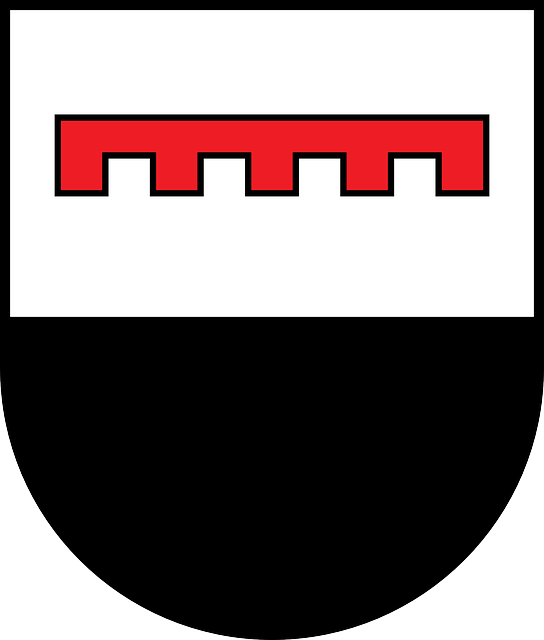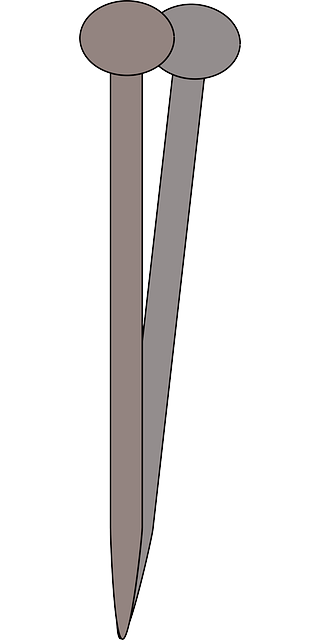ترانسلڤانيا
ترانسلڤانيا ( بالألمانية: Siebenbürgen ◄ انصت (مساعدة·معلومات) ) هي منطقة تاريخية في الجزء الأوسط من رومانيا. يحدها من الشرق والجنوب سلسلة الجبال الكرپاثية، وقد امتدت ترانسلڤانيا التاريخية غرباً حتى جبال أپوسني؛ إلا حتى الحدثة كثيراً ما تضم ليس فقط ترانسلڤانيا نفسها، بل تضم أيضاً المناطق التاريخية كريشانا، مرامورش، وبنات.
وقد كانت ترانسلڤانيا نواة مملكة داتشيا (82 ق.م.–106 م). وفي 106 م، أخضعت الامبراطورية الرومانية المنطقة ومنذ ذلك الحين استغلت ثرواتها بطريقة منهجية. وبعد انسحاب الفيالق الرومانية في عام 271 م، سيطرت عليها قبائل متعاقبة، مما عرضها لتأثيرات مختلفة. أثناء تلك الفترة مناطق منها سقطت تحت سيطرة القوط الغربيون، الهون، الگپيد، والأڤار. Thereafter the Romanized Dacian inhabitants either moved into the mountains and preserved their culture or migrated southward. It is likely that elements of the mixed Daco–Roman population held out in Transylvania. There is an ongoing scholarly debate over the population of Transylvania before the Hungarian conquest (see Origin of the Romanians).
The Magyars conquered the area at the end of the 9th century and firmly established their control over it in 1003, when their king ستفان الأول, according to legend, defeated the native prince entitled or named Gyula. بين عامي 1003 و1526، كانت ترانسلڤانيا ڤويڤودية في مملكة المجر، بقيادة ڤويڤود يعينه الملك المجري. بعد معركة موهاكس في 1526 أصبحت ترانسلڤانيا عملياً إمارة مستقلة بحكمها بشكل رئيسي أمراء مجريون كالڤنيون. وبعد ذلك، في 1566، تم تقاسم المجر بين الهابسبورگ والأتراك، مع احتفاظ الإمارة الترانسلڤانية باستقلال ذاتي ككيان خاضع للدولة العثمانية.
استولى الهابسبورگ على الإقليم بُعيد معركة ڤيينا في 1683. إلا حتى الهابسبورگ اعترفوا بالسيادة المجرية على ترانسلڤانيا،[محل شك] بينما اعترف الترانسلڤان بسيادة الامبراطور الهابسبورگي ليوپولد الأول (1687)، وأُلحِقت المنطقة رسمياً بإمبراطورية الهابسبورگ، لتنفصل في جميع شيء إلا الاسم عن المجر التي يسيطر عليها الهابسبورگ ولتخضع لحكم مباشر من حكام الامبراطور. وفي 1699 اعترف الأتراك رسمياً بخسارتهم ترانسلڤانيا في معاهدة كارلوڤتس; however, anti-Habsburg elements within the principality only submitted to the emperor in the 1711 Peace of Szatmár. After the Ausgleich of 1867 the region was fully reabsorbed into Hungary كجزء من الامبراطورية النمساوية-المجرية المنشأة حديثاً.
Following defeat in الحرب العالمية الأولى, Austria-Hungary began to disintegrate. The ethnic Romanian majority elected representatives, who then proclaimed union with Romania on December 1, 1918. In 1920, the Allies confirmed the union في معاهدة تريانون. Hungary protested against the detach, as over 1,600,000 Hungarian people were living in the area in question, mainly in Szekler Land of Eastern Transylvania, and along the newly created border, which was drawn through areas with Hungarian majority. In August 1940, in the midst of الحرب العالمية الثانية, Hungary regained about 40% of Transylvania by the Vienna Award, with the aid of Germany and Italy. The territory, however, reverted to Romania in 1945; this was confirmed in the 1947 Paris Peace Treaties.
In distant regions, Transylvania is also often associated with Dracula (رواية برام ستوكر وتحويلها إلى أفلام), and the horror genre in general, while in countries of Central and Eastern Europe the region is known for the scenic beauty of its Carpathian landscape وتاريخها الثري.
أصل الحدثة
- Transylvania was first referred to in a Medieval Latin document in 1075 as ultra silvam, meaning "beyond the forest" (ultra (+accusative) meaning "beyond" or "on the far side of" and the accusative case of sylva (sylvam) meaning "wood or forest"). Transylvania, with an alternative Latin prepositional prefix, means "on the other side of the woods". Hungarian historians claim that the Medieval Latin form Ultrasylvania, later Transylvania, was a direct translation from the Hungarian form Erdő-elve (not the Hungarian was derived from the Latin).
- The German name Siebenbürgen means "seven fortresses", after the seven (ethnic German) Transylvanian Saxons' cities in the region (Kronstadt, Schäßburg, Mediasch, Hermannstadt, Mühlbach, Bistritz and Klausenburg). This is also the origin of many other languages' names for the region, such as the Polish Siedmiogród.
- The Hungarian form Erdély was first mentioned in the 12th century Gesta Hungarorum as "Erdeuleu".
- The first known occurrence of the Romanian name Ardeal appeared in a document in 1432 as Ardeliu.
التاريخ
يتشابه تاريخ ترانسلفانيا السياسي في كثير من الوجوه مع تاريخ مقدونيا من حيث التعقيد والصراع الذي كان يدور من أجل السيطرة عليها بين سكانها من الرومانيين والمجريين. ومعظم أصول تلك المشكلات والعلاقات تعود إلى العصور الوسطى, ففي نهاية القرن التاسع ظهر المجريون في أوروبا وغزوا البلاد التي أصبحت يعيشون عليها وأخذت إسمهم. وفي القرن التالي (العاشر) إستولوا على ترانسلفانيا، ثم إستقدموا قبائل الساكسون Saxons والجرمان من منطقة الراين ليستقروا على الحدود وايكونوا بمثابة حرس لها، وفي القوت نفسه يعملون بالتجارة وبفلاحة الأرض حيث إزدهرت الزراعة بفضل مهارتهم. كما سكن المنطقة التشيك Szeklers وهم عناصر تمت بصلة قرابة للمجريين ويتحدثون نفس لغتهم. وقد تلقى الساكسون والتشيك مواثيق من ملك المجر يعترف بمقتضاها بأن جميع منهم يمثل عشيرة Natio أي أمة بالمعنى السائد في العصور الوسطى, ولهم حق حكم أنفسهم في منطقتهم حكماً ذاتياً, ومن ثم كانوا يختارون "الكونت" الذي يدير شؤونهم والذي كان مسئولاً أمام ملك المجر, على حين كانت شؤون العباد تدار بفهم الدايت Diet أي البرلمان الترانسلفاني. وماأن اتى القرن الخامس عشر حتى كان هذا الأقليم الذي أصبح تحت سيطرة العناصر السكانية الثلاثة (الساكسون والتشيك والمجريون أنفسهم) قد أصبح دولة شبه مستقلة بإسم المجر. وبعد عام 1526 سقطت ترانسلفانيا والمجر في يد العثمانيين لكن الأقليم ظل محافظاً على وضعه الإنفصالي. ومن ناحية أخرى هجرت الحروب الدينية التي أشعلتها حركة مارتن لوثر الإصلاحية آثارها في المنطقة، إذ نتج عنها حتى الساكسونيين أصبحوا لوثريون، والمجريون إنقسموا بين كاثوليك وكالفينيين، والتشيك بين كاثوليك ولوثريين وأنصار الطبيعة الواحدة. إلى غير ذلك وفي نهاية القرن السادس عشر كان بالمجر ثلاثة قوميات تنقسم شعوبها بين اربعة مذاهب: الكاثولكية, والكالفينية، واللوثرية، ونصار الطبيعة الواحدة, وكل منها له نبيل معين يدير شؤونه الإقتصادية السياسية، وكاهن يتولى شؤون عقيدته الدينية.
وفي إطار تلك الترتيبات القومية والممضىية في المنطقة لم يكن هناك مكان للكنيسة الأرثوذكسية أوللرومانيين رغم ضخامة عددهم حيث كانوا يمثلون أغلبية مطلقة في القرن الثامن عشر، وكان المؤرخون الرومانيون والمجريون يناقشون بحرارة مسألة أصل إستيطان الرومانيين في تلك المنقطة وأنه يعود إلى قرنين من الزمان. وبدون الدخول في عملية تقييم لتلك الأراء فإنه يمكن القول إذا الرومانيين ينحدرون من الداشيين Dacians ومن الرومان القدامى الذين إستوطنوا المكان وعاشوا بشكل مستمر في ترانسلفانيا منذ زمن بعيد، وأنهم أسبق من المجريين في المنطقة بعدة قرون. أما المؤرخون المجريون يقولون إذا الرومانيين وصلوا إلى المكان في القرنين الثالث عشر والرابع عشر من جنوب الدانوب، وكانوا مجرد فلاحين فقراء يرعون الأغنام، وبالتالي لا يمكن إعتبارهم متساوون مع الثلاثة قوميات المميزة في المكان. والحقيقة أنه يصعب ترجيح أحد وجهتي النظر على الأخرى لكن تظل الحقيقة الواضحة حتى أغلبية الرتانسلفانيين من الرومانيين في القرن الثامن عشر لمقد يكونوا يتمتعون بحقوق سياسية، وكنسيتهم غير معترف بها.
وبمقتضى معاهدة كارلوفيتس Karlowitz 1699 (سرمسكي كارلوفيتش Sermski Karlovci) إستعادت النمسا ترانسلفانيا من الدولة العثمانية. وكان إمبراطور النمسا ليوبولد قد اصدر في 1691 وثيقة تحدد وضع ترانسلفانيا ظلت سارية المفعول حتى 1848 أكد فيها حقوق الثلاث قوميات والأربعة عقائد، وإعترف بالحكم الذاتي هناك. وفي 1722 تم الإعتراف بأن ترانسلفانيا جزء من أراضي التاج المجري مع إحتفاظها ببرلمانها (الدايت) ونظامها الإداري، وفي الوقت نفسه إحتفظ الإمبراطور والبلاط بالسيطرة السياسية المطلقة على الأقليم فهوالذي يعين حاكمها, ويختار أعضاء الدايت من أبناء الطبقات العليا في القوميات الثلاثة والعقائد الأربعة.
في إطار تلك الظروف السياسية لم يكن للرومانيين إلا فرصة ضئيلة للتقدم بشؤونهم كأحد التجمعات العرقية القائمة خاصة وأنهم كانوا يشكلون الشريحة الدنيا إجتماعية وإقتصادياً ومعظم الفلاحين يعيشون في إقطاعيات كبار الملاك ويعملون في إطار الإلتزامات الإقطاعية من حيث الضرائب والسخرة التي سبقت الإشارة إليها, فضلاً عن أنهم كانوا أميون وليست لهم مواقف سياسية إيجابية, بل كانوا مستسلمون للواقع شأنهم في ذلك شأن نظرائهم بين قوميات البلقان، وليست لهم أية حقوق سياسية. وفي عبارات أخرى فإن الوضع المتدني سياسياً للرومانيين في ترانسلفانيا يعود إلى طبيعة وضعهم الإجتماعي وأصولهم القومية والدينية.
والحقيقة حتى الكنيسة الأرثوذكسية في ترانسلفانيا خطت خطوات كبيرة في بواكير الحركة القومية شأن ما وقع بين شعوب البلقان الأخرى, ذلك حتى رجال الدين كانوا هم المجموعة الوحيدة المتفهمة بين الرومانيين، وكانوا يعانون من عدم الإعتراف بكنيستهم، وطغيان الكاثوليكية في أنحاء الإمبراطورية النمساوية بشكل عام. وفي مطلع القرن الثامن عشر قام آباء الكنيسة الأرثوذكسية بتوقيع ميثاق الإتحاد مع الكاثوليك وأسسوا الكنيسة الموحدة Uniate أملاً في تحسين وضعهم. ورغم خيبة أملهم في تحسين أوضاعهم بمقتضى هذا المثياق، إلا حتى الكنيسة الجديدة قامت بدور قيادي فيما بعد في تطور الحركة القومية الرومانية. وكان أول متحدث رسمي عن حقوق الرومانيين في ترانسلفانيا الأسقف إيون إينوشنتيه كلاين Ion Ionchentie Clain أسقف الكنيسة الموحدة من 1729-1751. وعندما عجز عن تحقيق أية مطالب قومية لشعبه من الدايت الترانسلفاني (البرلمان)، لجأ إلى المسئولين في فيينا عاصمة النمسا وطلب منهم بصفة خاصة حتىقد يكون الرومانيون قومية رابعة معترف بها جنباً إلى جنب المجريين والساكسون والتشيك, وإحتج على الاستغلال الذي يتعرض له الفلاحون. وبناء على هذا الموقف بدأت محاصرته والتضييق عليه حتى إضطر إلى مغادرة البلاد في منفى إختياري. ولكن في 1761 إضطرت حكومة النمسا إلى السماح بتكوين كنيسة أرثوذكسية بناء على حالة السخط والغضب التي عمت ترانسلفانيا, ولوأنها كانت كنيسة أقل مرتبة من كنائس العقائد والمذاهب الأخرى المميزة والمعترف بها داخل الإمبراطورية. وفي عهد الإمبراطور جوزيف الثاني تمت محاولة لتحسين وضع الفلاحين.
ولقد ظلت الكنيسة الموحدة (الجديدة) والكنيسة الأرثوذكسية مركز الحياةى الثقافية للرومانيين, وكانت القيادات الثلاثة الرئيسية في بداية الرحكة القومية قد درست في مؤسسات الكنيسة الموحدة وهم جورج شينكاي Sincai, وبيتر مايور Maior, وصموئيل كلاين (ميشوMicu). وقد أسس هؤلاء الثلاثة ما يعهد بالمدرسة الترانسلفانية التي سعت لبناء فكرة حتى الرومانيين هم أحفاد الداشيين والرومان القدامى, وأنهم السكان الأصليون في المنطقة (ترانسلفانيا)، بينما المجريون قدموا حديثاً إلى المنطقة منذ العصور الوسطى فقط. ومن ناحية أخرى كان إسهام جورج شينكاتي وصمويل كلاين في بناء اللغة الرومانية على جانب كبير من الأهمية، ففي 1780 نشرا أول أجرومية رومانية بعنوان "عناصر اللغة الداشية-الرومانية أوالولاخية"، وأحكما عملية إحلال الأبجدية السلافونية السابقة بالحروف اللاتينية، وإجتهد في إستبعاد الحدثات غير اللاتينية منها. وتتشابه جهودهما في هذا الشأن مع جهود جميع من أوبرادوفيتش Obradovic وكاراديتش Karadzic في الصرب. وفي 1812 أكمل مايور كتابه العظيم "تاريخ أصل الرومانيين في داشيا" ولقد إمتد تأثير هؤلاء الرجال إلى ولاشيا ومولدافيا حيث أثارت أعمالهم الحركة القومية.
على حتى أبرز وثيقة سياسية خاصة بالحركة الرومانية في القرن الثامن عشر الإلتماس الذي قدم في 1791 إلى الدايت الترانسلفاني وعنوانه Valachorum Supplex Libellus وقد صاغه صمويل كلاين وقادة الرومانيون آخرون. وقد بينت الوثيقة تفسير الرومانيين لتاريخهم من وجهة نظرهم، وحددت مطالب بعينها تتلخص في الإعتراف بهم كقومية رابعة وتمثيلهم تمثيلاً نسبياً في كافة مستويات الإدارة في ترانسلفانيا. كما أبدى المسقطون على الوثيقة رغبتهم في الدعوة لمؤتمر قومي, وإطلاق الأسماء الرومانية على الأماكن التي تعيش فيها أغلبية رومانية, وهي مطالب رفضها الداين بسرعة. غير حتى الوقت لم يكن مواتياً لإتخاذ إجراءات من أي نوع ذلك حتى الإمبراطورية جميعها كانت في حالة إنتفاضة ضد الإجراءات الإصلاحية التي قام بها جوزيف الثاني فضلاً عن أحداث الثورة الفرنسية. ولاشك حتى "الوثيقة" كانت تمثل برنامجاً قومياً ساندها الرومانيون وكذا الزعماء الدينيون.
وخلال السنوات التالية لم تحقق حركة الرومانيين القومية أي تقدم نحوأهدافها بل لقد قابلت أخطاراً متزايدة. ففي مطلع القرن التاسع عشر دخلت المجر في فترة حادة من المنافسة القومية لتحقيق هدفين إثنين, كان أولهما إقامة دولة موحدة ومركزية خارج أراضي التاج المجري, والثاني تحقيق الإستقلال التام عن النمسا. وكان الهدف الأول يعني بذل الجهود الممكنة لإستيعاب جميع من السلاف والرومانيين والساكسون تحت ولاية إدارة مجرية أوبمعنى آخر "مجرتهم". وكانت المستوى الأولى في هذا الإتجاه جعل اللغة المجرية لغة رسمية وحيدة في البلاد محل اللاتينية.
على حتى هذه السياسة المجرية التي أصبحت أساس الصراع القومي فيما بعد كان لها ما يبررهاغ منطقياً في نظر المجريين, إذ كانت تعكس بشكل جوهري سياسة لويس كوسيوث Kossuth القائد المجري القومي العظيم في منتصف القرن, وبالتالي إذا إقتصر القوميون المجريون في برنامجهم على إقامة دولة مجرية على أساس العرق مثل الترانسلفانيون، والكروات، والسلافونيون، وأهالي فويفودينا, وسلوفاكيا. وبدون تلك الأراضي تكون المجر دولة فقيرة وضعيفة. أما إذا تم التمسك بكل أنطقيم تاج القديس ستيفن فإنه يتعين إجراء بعض ترتيبات لإستيعاب القوميات الأخرى التي تمثل 50% من السكان بعيداً عن فكرة الحكم الذاتي لكل منها لتناقضها مع مشروع الدولةالمجرية القومية بشكل أساسي. وبالتالي فإن البديل الوحيد لتحقيق تلك الدولة هو"ميجرة" القوميات الأخرى عن طريق فرض اللغة المجرية على جميع القوميات في الإدارة والقضاء والتعليم, وكذا التجراة ومجال الأعمال. وقد ظلت تلك هي جوهر سياسة المجر حتى عام 1914 بإستثناء فترات معينة حدثتن فيها بعض المساومات والحلول الوسطى مثلما وقع خلال الفترة 1860-1866 وكان هذا يعني في النهاية حتى على الرومانيين والسلافيين التغلب على تلك السياسة المجرية إذا ما أرادوا إحياء قوميتهم.
كان عام 1848 هوالعام الحاسم بالنسبة للحركة المجرية, إذ إنهارت حكومة النمسا أمام الحركات الثورية التي إنتشرت في أحاء الإمبراطورية, ومن ثم أسس المجريون بدروهم حكومة منفصلة عن الحكومة المركزية ذات نظام دستوري تمشياً مع الأفكار الليبرالية لكن لم يرحبوا بهذا الإندماج. زعلى هذا تجمهر أربعون ألف روماني في مدينة بلاي Blaj ف يمايو1848 في مكان يعهد "بأرض الحرية" وأعربوا قرارات تدعوللإعتراف بالرومانيين كقومية منفردة, وبأن تكون الكنيسة الأرثوذكسية مؤسسة دينية على قدم المساواة مع الكنائس الأخرى, وأنقد يكون للرومانيين حق التمثيل النسبي في الدايت والإدارة, بل لقد رفض المجتمعون فكرة إندماج ترانسلفانيا مع المجر دون موافقة السكان.
غير حتى الحكومة الثورية المجرية بقيادة كوسيوث لم ترفض فقط مطالب الرومانيين بل لقد رفضت أيضاً مطالب مماثلة تقدم بها الساكسون والصرب والكروات. وأمام رفض المجر وموقفهم المتصلب العنيد لجأ الزعماء الرومانيون إلى حكومة النمسا. ورغم حتى النمسا كانت تقابل صعوبات كثيرة إلا أنها إهتمت بالوفد الذي اتى يعرض مطالب للرومانيين. ولأن النمسا لم ترفض مطالبهم فقد وقف الرومانيون وسلاف الجنوب إلى جانبها ضد ثورة المجر. وعلى هذا وعندما إقتحم الجيش النمساوي المجر في 1849 عثر تعاوناً من القوميات غير المجرية وكذا عثر الجيش الروسي التعاون نفسه عندما ولج المجر في يونية من العام نفسه لمساندة النمسا.
ومما زاد من خيبة أمل زعماء الرومانيين وسلاف الجنوب حتى وضعهم السياسي لم يتحسن مع إخماد ثورة المجر وإستعادة النمسا لنفوذها هناك, بل لقد عملت النمسا على فرض إدراة مركزية على أنحاء البلاد عهدت بنظام باخ Bach Syste ففقدت ترانسلفانيا حقوق الحكم الذاتي وعادت لتكون تحت سيطرة النمسا مباشرة, في القوت الذي لم تعبأ كثيراً بالوفود التي كانت تترى إلى فيينا للإحتجاج بل وأهملت أيضاً الالتماسات التي كانت تقدم لها في هذا الشأن,وظلت الأهداف الرومانية كما هي: الإعتراف بالقومية الرومانية ضمن القوميات المعترف بها, وإقامة حكومة ذاتية لترانسلفانيا يتمتع الرومانيون فيها بوضع يتناسب معغ قوتهم غير المحدودة.
في تلك الأثناء كان الزعيم الروماني دون منازع هوالأسقف الأرثوذكسي آندريوشاجونا Andreiu Saguna الذي كرس جهوده لتحسين وضع الكنيسة الأرثوذكسية, ولتعليم الشعب الروماني. لكن ظلت العقية الرئيسية أمام هذه الكنيسة كما هي وتكمن في تخوف الكاثوليك من حتى توجد مؤسسة أرثوذكسية قوية قد يؤدي إلى تدمير جهودهم في نشر الكاثوليكية بين الأرثوذكس من خلال الكنيسة الموحدة, فضلاً عن إعتراف بطريركية الصرب في كارلوفيتز التي يقع الرومانيون الأرثوذكس تحت تحت ولايتها. ومن ثم إنصرف شاجونا للعمل على تحسين مستوى تدريب رجال الدين ليكونوا أكثر قدرة على التأثير كمفهمين في المدارس التي إنتشرت وتوسعت بشكل ملحوظ آنذاك, فبعد عشر سنوات تقريباً تأسست حوالي خمسمائة مدرسة إبتدائية جديدة أضيفت للمائة القائمة. كما كان شاجونا مسئولاً أيضاً عن إنشاء مطبعة وإصدار صحيفة, وكان يؤيد حكم النمسا لترانسلفانيا بإعتباره أفضل من أ، تكون تحت حكم المجر.
وبحلول عام 1863 تمكن الرومانيون من تحقيق نجاح كبير في قضيتهم, ذلك أ،ه بعد هزيمة النمسا في 1859 في حرب الوحدة الإيطالية تخلت عن "نظام باخ" في ألوب الحكم, وعملت على إعادة الحكم في إعادة الحكم في الدولة إلى نوع من الشكل الدستوري. وكان هذا يعني بالنسبة لترانسلفانيا إعادة الدايت لنشاطه السياسي, وبالتالي إمكانية الرجوع إلى جميع قومية من القوميات القائمة بما فيها الرومانيون لأخذ رأيها فيما يتعلق بالإصلاحات في المستقبل قبل إقرارها. لكن المجر عارضت بقوة تلك الإجراءات الجديدة التي إتخذتها النمسا على أساس حتى الوحدة التي أعربت في 1848 بينها وبين ترانسلفانيا لا تزال قائمة, وبالتالي ينبغي حتىقد يكون لترانسلفانيا مجلس دايت خاص بها. وأجاب الرومانيون يساندهم كثير من زعماء الساكسون بأن تلك الوحدة لم تعد قائمة بهزيمة المجر في عام 1849, وبصدور "نظام باخ", ونجحوا في إستصدار قانون إنتخابي حديث محل قانون عام 1848 خصص للرومانيين ثلاثة نواب فقط في الدايت من إجمالي ثلاثمائة نائباً, فما كان من المجر إلا حتى رفض الإشتراك في عضوية الدايت الجديد.
وبغياب المجريين عن الدايت الجديد أصبح بإمكان النواب الرومانيون والساكسون إصدار تشريعات لتغيير طبيعة الإدارة في ترانسلفانيا, وأعرب الرومانيون حتى قوميتهم تتكافأ مع قوميات المجر والتشيك والساكسون. كما أخذت الكنائس الموحدة والأرثوذكسية نفس مكانة كنائس الأربعة مذاهب الأخرى, وأكثر من هذا فإن إمبراطور النمسا, وبعمل جهود الأسقف شاجونا وافق على فصل الكنيسة الرومانية الأرثوذكسية عن البطريركية الصربية, ومن ثم تأسست أسقفية أرثوذكسية رئاسية في مدينة شبييوSibiu وأسقفيات في جميع من آراد Arad, وكارنسبيش Caransebes, وتم الإعتراف باللغة الرومانية جنباً إلى جنب الجرمانية والمجرية. وبهذا أصبح الرومانيون ولأول مرة في التاريخ الحديث متساوون مساواة قانونية مع باقي أهالي ترانسلفانيا.
غير حتى تلك الإصلاحات لم تستمر طويلاً, ذلك حتى المجريين يتمتعون بوضع قوي في أنحاء إمبراطوريسة النمسا, على حين حتى وضع الحكومة المركزية في فيينا كان ضعيفاً. ولهذا وبسبب إمتناع المجريين عن التعاون مع أجهزة الدولة إضطر الإمبارطور فرانز خوزيف لتقديم تنازلات لهم, ففي 1865 تم إلغاء قانون إنتخاب دايت ترانسلفانيا, وعرض مشروع قانون حديث يخصص للمجريين الذين يمثلون 29% فقط من إجمالي السكان 89 مقعداً على حين حتى الرومانيين الذين يمثلون أغلبية خصص لهم ثلاثة عشر مقعداً. وهذا الدايت هوالذي قام بالتصويت على وحدة ترانسلفانيا مع المجر ذلك القرار الذي قبله الإمبراطور.
إلى غير ذلك تحولت ترانسلفانيا التي كانت جزء من المجر لها جهازها الإداري وبرلمانها (الدايت) إلى محافظة مملكة المجر. وبينما كان الرومانيون في 1863 يشكلون أغلبية في ترانسلفانيا تتمتع بالمساواة مع سائر القوميات الأخرى, أصبحوا أقلية تمثل 15% من رعايا المجر. وأكثر من هذا حتى مستقبلهم أصبح نظلماً في كثير من المجالات خاصة وأن جيلاً جديداً من الساسة المجريين تولوا شؤون الحكم وأخذوا يعملون على تطبيق مبادئ كوسيوث من حيث "الميجرة".
وبعد هزيمة النمسا على يد بروسيا كما سبقت الإشارة أعادت النمسا تنظيم سياساتها طبقاً لتسوية "أوسجلايش" Ausgleich في 1867. وكانت لهذه الهزيمة عواقب وخيمة على جميع من الرومانيين وسلاف الجموب فمنذ ذلك التاريخ إنقسمت إمبراطورية النمسا-المجر أوما كان يعهد بالمملكة الثنائية إلى وحدتين جميع وحدة تتميز عن الأخرى ولكن تحت حكم واحد أصبح يعهد بإمبراطور النمسا وملك المجر ولها سياسة خارجية واحدة وجيشواحد على حتى يلتقي وفدان من جميع وحدة دورياً لحل المشكلات المشهجرة, ولكل وحدة حكومة خاصة لها الحرية في مباشرة شؤون الإدارة الداخلية. والحال كذلك أسرع الرومانيون وسلاف الجنوب الذين أصبحوا تحت حكم وحدة المجر التابعة بتقديم إلتماسات إلى حكومة النمسا لحمل المظالم التي أصابتهم من جراء سياسة حكومة المجر.
وبشكل عام لم تكن تسوية أوسجلايش سيئة من حيث المبادئ التي أقرتها, ففي 1868 أعرب برلمان المجر حتى جميع مواطني المجر متساوون, وتقرر إلغاء أية ميزات خاصة تنفرد بها قومية دون القوميات الأخرى. كما صدر قانون القوميات الذي يعتبر أكثر التشريعات التي صدرت في دولة متعددة القوميات تقدمية على الإطلاق, إذ منح الحق لكل قومية في إستخدام لغتها الخاصة في جميع أوجه حياتها الثقافية والسياسية. في التعليم بالمدارس الإبتدائية والثانوية, وفي التقاضي أمام المحاكم, وفي البرلمان ومجلس الإقليم, كما تقرر حتى يتفهم المسئولون الإداريون في جميع إقليم لغة أهله, وأن يشغل غير المجريين وظائف إدارية وقضائية. غير حتى الذي وقع أ، تلك الإصلاحات ظلت حبراً على ورق ولم تنفذ شأن الإصلاحات التي كانت تقررها الدولة الحديثة.
ومن سوء الحظ حتى جيل المجريين الذين عبروا ببلادهم من هزيمة 1849 إلى إنتصار 1876 السياسي مثل فرانسيس دياك Deak, وجوزيف إيوتفوس Eotvos لم يكن بإمكانهم متبعة برامجهم حتى النهاية إذ كانت سياساتهم تعتمد على مبدأ التكيف مع القوميات على حين حتى منافسيهم بقيادة كولومان تشيزا Koloman Tisza عزموا على أ، يجعلوا المجر دولة مجرية واحدة موحدة. وفي 1875 أصبح تشيزا رئيس وزراء المجر وظل حزبه (الحزب الليبرالي) يسيطر على الحكومة المجرية طوال الثلاثين عاماً التالية حيث كان يتم ترتيب الإنتخابات البرلمانية بحيث تأتي أغلبية مجرية دوماً تمكنت من تمرير قوانين تغير من أسلوب التعليم ولغته على أساس حتى التعليم هومفتاح نجاح عملية "الميجرة", أوكما شرحها بكل حيوية وحماس بيلا جرونفالد Bela Grunwald شريك تشيزا بقوله"إن المدارس الثانوية مثل آلة ضخمة إذا ألقيت فيها مئات الشباب السلوفاك من ناحية يخرجون من الناحية الثانية وقد اصبحوا مجريون. وعلى هذا وفي 1879 طلب من جميع مفهمي المدارس الإبتدائية فهم اللغة المجرية حتى أولئك الذين يعيشون في قرى رومانية أوسلوفاكية. وفيما بعد إقتصر أمر إنشاء مدارس أومؤسسات تعليمية جديدة على المدارس المجرية فقط. وسرعان ما أصبحت التعليمات والملاحظات العامة تخط بالمجرية, وكذا أسماء الشوارع وطوابع البريد, وإشارات السك الحديدية, وتعرضت العائلات للضغط لميجرة أسماء أفرادها, وإقتصرت المناصب القضائية والإدارية على المجريين. وأكثر من هذا تم تشجيع الفلاحين المجريين على الإستيطان في ترانسلفانيا, وإغراء المقاولين المجريين على إستثمار أموالهم في تنمية الصناعات في ترانسلفانيا.
على جميع حال . . لقد إنتهت سياسة "الميجرة" بردود عمل متسقطة إذ إتحدت جميع عناصر البلاد بكب طبقاتها والذين شعروا بالخطر المحدق بشخصيتهم القومية. إلى غير ذلك تأسس أول حزب سياسي روماني بإسم الحزب القومي في مدينة سيبيوفي عام 1881 ونادى برنامجه إلى إستعادة سلطة ترانسلفانيا, وإستخدام اللغة الرومانية في الإدارة والقضاء, وتعيين الموظفين الذين يعهدونها. ثم إتخذ الزعماء الرومانيون سياسة المقاومة السلبية للقاءة التهديد المجري فقاطعوا البرلمان ورفضوا تولي أية وظائف حكومية. وفي الوقت نفسه ظهر جيل حديث من الطلاب شبيه بطلاب مولدافيا وولاشيا في 1848 ووقف إلى جانب برنامج يدعولإتحاد جميع الرومانيين في مملكة واحدة, وهوهدف كان يعني بطبيعة الحال تفتيت أراضي مملكة المجر. وفي 1890 أشار الحزب إشارات مماثلة في خطابه عن "أمة رومانية عظمى قوامها أحد عشر مليوناً".
وخلال القرن التاسع عشر كان للإحداث التي سقطت في ترانسلفانيا صداها في إمارتي الدانوب (مولدافيا وولاشيا) وكانت المعاملة التي خضع لها الرومانيون في ترانسلفانيا نقطة حساسة في العلاقات بينهم وبين النمسا, فحدثا زاد ضغط النمسا عليهم إزدادت رغبتهم في إعلان مملكة رومانية. وفي 1891 تكونت في بوخارست "رابطة الثقافة الرومانية" بفهم اساتذة الجامعة وطلابها سارعت بإعداد "مذكرة" بخمس لغات لتنبيه الرأي العام الأوروبي بمتاعب الرومانيين في ترانسلفانيا، فرد عليهم الطلاب المجريون في بودابست,وإندفع الطلاب الرومانيون في ترانسلفانيا بدورهم إلى تفنيد ما اتى برد الطلاب المجريين. أما محرر رد طلاب ترانسلفانيا أوريل بوبوفيتش Aurel Popovici فقد حكم عليه بالسجن لكنه أفلح في الهرب إلى رومانيا حيث سيظهر إسمه فيما بعد في عام 1906 عندما أعد خطة شهيرة بشأن إعادة تنظيم المملكة. وسرعان ما تبنى الحزب القومي قضية أولئك الطلاب وأعد مذكرة حملها وفد إلى فيينا للقاءة الإمبراطور فرانز جوزيف تطالبه مرة أخرى بإستعادة الحكم الذاتي لترانسلفانيا لكن الإمبراطور رفضها, بل لقد تم إعتنطق زعماء الحزب بفهم حكومة المجر وتمت محاكمتهم. على حتى هذه "المذكرة المحنة" كما وصفت فيما بعد كانت فرصة هائلة للرومانيين لفت إنتباه قطاع عريض من الرأي العام لقضيتهم. وعلى الرغم من حتى محاكمة أعضاء الزب القومي قد دمرت مكانة الحزب وإنتهت بسجنهم إلا حتى المشهد نفسه كان نادىية لها قيمتها للرومانيين شأن ما وقع فيما بعد لحركة سلاف الجنوب مما أدى في النهاية إلى تعاون الرومانيين معغ سائر القوميات السلافية. ففي 1895 عقد مؤتمر للقوميات في بودابست حضره الصربيون والسلوفاك وأكد المؤتمرون حتى المجر دولة متعددة القوميات وليست دولة ذات قومية واحدة أوواحدة القومية.
على حتى إحتجاج كافة القوميات لم يؤثر بدرجة أوبأخرى على سياسة المجر بشأن "سياسة الميجرة" بل على العكس وجدنا حتى حكومة المجر تمد أهدافها القومية في إتجاه آخر وبالتالي دخلت مرة أخرى في صراع مع إمبراطورية النمسا. ففي 1905 عملت على إيجاد جيش منفصل بعيداً عن القوة العسكرية المشهجرة التي تأسست بمقتضى "ميثاق أوزجليخ", وهوأمر لم يكن ليستسلم له لإمبارطور فرانز جوزيف بحال من الأحوال. فلما أرغمت المجر على التراجع عن رغبتها في إيجاد هذا الجيش المنفصل تشجع الرومانيون بدورهم على التخلي عن سياسة المقاومة السلبية التي لم تكن ناجحة بأي شكل من الأشكال وإشهجروا مرة أخرى في الحكومنة المجرية.
فلما عاد النواب الرومانيون لبرلمان وجدوا أنفسهم يقابلون إجراءات غاية في الشدة والقسوة تجاه خصوصيتهم القومية, ففي 1907 تقدم الكونت البرت آبوني Apponyi وزير التعليم بمشروع قانون حديث للمدارس إشترط إجادة المدرسين اللغة المجرية, وتدريس القومية المجرية في جميع المدارس,وفي حالة عدم فهم التلاميذ اللغة المجرية بعد أربع سنوات من الدراسة يفترض أن يتم طرد المدرسين من المدارس, فضلاً عن تولي الدولة شؤون مدارس الكنائس عن دفع مرتبات عالية فلا تجد مدرسين. وفي 1909 تقرر تدريس الدين في المدارس المتوسطة بالمجرية وتمت عدة خطوات ضد الكنيسة الرومانية في 1912 عندما وافق بابا الفاتيكان على طلب المجر بإبعاد 83 كاهناً من الكنيسة الرومانية الموحدة, ووضع أبروشيتهم تحت إشراف الرئاسة الأسقفية المجرية اليونانية-الكاثوليكية في هايدودورج Hajdudorog التي كانت قد أنشئت مؤخراً على حتى تباشر الطقوس الدينية باليونانية البيزنطية وإلى حتى يتفهمها الكهنة تتم مباشرة الطقوس بالمجرية, وكان ذلك الإجراء محاولة أبعد في طريق الميجرة. وعلىالرغم من قيام حكومة المجر ببعض الجهود قبل عام 1914 لتهدئة الغضب القومي, إلا أنها لم تكن لتقبل على الإطلاق طلب الرومانيين بإعادة الحكم اذاتي لترانسلفانيا.
وفي عام 1914 أمكن القول حتى الرومانيين في ترانسلفانيا نجحوا في تنمية الشعور القومي بشدة بينهم وهوشعور كان يزداد قوة مع زيادة حدة الضغط المجري عليهم. وظلت أهداف المعارضة الرومانية كما هي: إستعادة الحكم الذاتي لترانسلفانيا,وتمتع جميع قومية بوشع سياسي يتناسب مع عدد أبنائها, إذ كان الرومانيون يمثلون 555 من سكان مملكة المجر, والمجريون أنفسهم يمثلون 34% وفق إحصاء عام 1910. ولكن ورغم حتى الساكسون في كثير من القضايا كانوا يقفون إلى جانب الرومانيين ضد حكومة المجر, إلا أنهم لمقد يكونوا ليساندوا فكرة تصفية الإمبراطورية النمساوية آنذاك. وحيث حتى الرومانيين كانوا يمثلون أغلبية صغيرة في الإقليم ويقابلون موقفاً أوربياً ثابتاً بشأن وضعهم داخل الإمبراطورية أصبح هدفهم السعي لإصلاح المملكة وليس تصفيتها. وأكثر من هذا ورغم وجود نشاط روماني سياسي في ترانسلفانيا إلا أنه لم يكن ليقارن بما كان يحدث في أراضي سلاف الجنوب حيث كانت تنتشر بينهم خلال القرن التاسع عدة برامج سياسية وأحزاب وحيث كانت تلك الأراضي محل النزاع تسكنا قوميات غير مجرية وتهيمن عليها تاريخياً وعرقياً.
وعلى الرغم من حتى المسألة الترانسلفانية كانت موضع إهتمام كبير من الحكومة الرومانية, إلا حتى الإستيلاء على ترانسلفانيا لم يكن جزء من سياستها الرسمية. ثم لعبت المسألة دراً كبيراً في العلاقات بين رومانيا والنمسا عشية الحرب العالمية الأولى أكثر من ذي قبل, وأصبح الرومانيون "الجدد" بما أصبح لهم من نفوذ سياسي أكثر حساسية للقضية القومية. وكانت النمسا في القرن التاسع عشر تخشى بإستمرار التأثير الذي يمكن حتى تقدمه الحكومة الرومانية للرومانيين في ترانسلفانيا. كما كان خطاب الحزب الليبرالي يكرر بإستمرار الحديث عن الأراضي الرومانية تاريخياً التي تشتمل على ترانسلفانيا وبوكوفينا وبسارابيا كأراضي قومية لا يمكن التفريط فيها وتكون موضع مطالبة في المستقبل.
وعلى هذا وضعت قيود شديدة على تحرك الزعماء الرومانيين في بوخارست قبل عام 1914, فأولاً كانت رومانيا جزء من دول التحالف الثلاثي, والنمسا عضوفيه وثانياً ورغم أ، ملك رومانيا تشارل ذوضمير حي ويؤدي واجبه على الوجه الأكمل, إلا أنه ظل في أعماقه وعواطفه أميراً جرمانياً ولم يكن ينتظر منه عكس بيتر ملك الصرب قيادة حركة قومية ضد بلاد يرتبط بها عاطفياً, وثالثاً أنه يجب ألا يغرب عن البال حتى مشكلات رومانيا في المقام الأول آنذاك كانت إقتصادية وليست سياسية, ذلك حتى رومانيا كانت قد خبرت في 1907 واحدة من أكبر ثورات الفلاحين ومن ثم كان وضع الفلاحين الرومانيين وتوزيع الأرض عليهم (الإصلاح الزراعي) في أولويات الأهداف القومية. وفي الوقت نفسه كانت رومانيا أكثر من دول البلقان الأخرى تتجه نحوتحول إقتصادي وتنمية مصادرها الطبيعية وطاقاتها الصناعية, وكان أعضاء الحكومة (الوزراء) مشغولون في تلك العمليات. ولم تصبح المطالبة بترانسلفانيا أمراً ملحاً من الناحية القومية إلا بعد إندلاع الحرب العالمية الأولى عندما ظهر على الساحة موقف غير متسقط كلية.
وواقع الأمر فلم يكن ضم ترانسلفانيا يمثل المشكلة الملحة في سياسة رومانيا الخارجية قبل 1914 لكن العلاقة مع بلغاريا كانت لها أولويتها, فقد كان قادة رومانيا شأن قادة اليونان والصرب يقفون بشدة ضد عزم بلغاريا إستعادة الحدود التي منحتها لها معاهدة سان ستيفانو، وبالتالي تكتسب مكانة زائدة في منطقة البلقان, فضلاً عن حتى جنوبي دوبروديا ظلت مطلباً رومانيا وهوالأمر الذي أدخل رومانيا في عام 1913 في صراع ضد المجر التي سعت لحماية مصالح بلغاريا لكن هذا الصراع لم يفض التحالف. ومن ناحية أخرى كان الدور الذي لعبته رومانيا في حروب البلقان كما رأينا أدى إلى تعاون وثيق مع الصرب. وفي اللقاء إنغمست الصرب في 1914 بعمق في الخلافات القومية القائمة في إمبراطورية النمسا وأصبح لها مطالب قومية وخاصة في البوسنة والهرسك يفترض أن تطالب بها متى حانت فرصة مواتية.
المقاطعة الرومانية داتشيا
The Kingdom of Dacia was in existence at least as early as the beginning of the 2nd century BC when, Rubobostes, a Dacian king from the territory of present-day Transylvania, undertook the control of the Carpathian basin by defeating the Celts who previously held the power in the region.
Dacia reached its maximum extent under the rule of Burebista. The area now constituting Transylvania was the political center of the ancient Kingdom of Dacia, where several important fortified cities were built; among them was the capital Sarmizegetusa, located near the current Romanian town of Hunedoara.
In 101-102 and 105-106 AD, Roman armies under the Emperor Trajan fought a series of military campaigns to subjugate the wealthy Dacian Kingdom. The Romans under Trajan succeeded by 106 to subdue the south and the center regions of Dacia. After the conquest, the Romans seized an enormous amount of wealth (the Dacian Wars were commemorated on Trajan's Column in Rome) and immediately started to exploit the Dacian gold and salt mines located in today territory of Transylvania. Roman influence was broadened by the construction of modern roads, and some existing major cities, like Sarmizegetusa and Dierna (today Orsova) were made colonies. The new province was divided under Hadrian: Dacia Superior, that corresponded roughly to Transylvania and Dacia Inferior, similar to the region of South Romania (Walachia)[]. During Antoninus Pius (138-161) the same territory was included in the provinces Dacia Porolissensis (capital at Porolissum) and Dacia Apulensis (capital at Apulum, today Alba-Iulia city in Romania). The Romans built new mines, roads and forts in the province. Colonists from other Roman provinces were brought in to settle the land and found cities like Apulum (now Alba Iulia), Napoca (now Cluj-Napoca), Ulpia Traiana Sarmizegetusa and Aquae. During the Roman administration also Christianity entered in the current territory of Transylvania from the neighboring Roman provinces where, according to the tradition of the Romanian Orthodox Church, St. Peter preached.
Due to increasing pressure from the Visigoths, the Romans abandoned the province during the reign of the Emperor Aurelian in 271. As across much of Europe, a period of chaos and conquests followed after the collapse of Roman rule. However, as shown by the archeological research, many of the Roman cities continued to exist, building fortifications. Also Christianity survived as proved by the many artifacts discovered. Among the most famous is the donarium from Biertan (4th century) having the inscription 'Ego Zenovius votvm posui' (I, Zenovie, offered this). The territory fell under the control of the Visigoths and Carpians until they were in turn displaced and subdued by the Huns in 376, under the leadership of their infamous warlord Attila. After the disintegration of Attila's empire, the Huns were succeeded by Gepids of Eurasian Avar descent. The region was also influenced during this period by massive Slavic immigration.
At the beginning of the 9th century, Transylvania, along with eastern Pannonia, was under the control of the First Bulgarian Empire[]. After a brief period of Bulgarian rule, the territory, was partially under Byzantine control.
فتح ترانسڤانيا ودمجها في مملكة المجر
حسب المصادر الرئيسية
The presence of Romanians in Transylvania before the arrival of the Magyar tribes is mentioned in the Hungarian chronicle Gesta Hungarorum. According to this document, Transylvania was inhabited by Romanians/Vlachs and Slavs at the time of the Magyar conquest and was ruled by the Vlach prince Gelou. After Gelou was killed by the Hungarians in a battle near the River Someş, his subjects elected Tuhutum as their prince.
Some historians consider the Gesta Hungarorum an unreliable source. For example the author thought Kende had been the father of Kurszán. In fact "kende" was a title of a Hungarian dignitary, probably the sacral ruler. It is also worth mentioning that the Gesta was written about 300 years after the Hungarians entered Transylvania. The author of Gesta also talks about Cuman people at the time of the arrival of the Hungarians in Transylvania, though their first appearance in the ancient homeland of the Hungarians (between the Lower Danube and the Don) is dated to the eleventh century.
The account of the Gesta Hungarorum is however repeated by Simon of Kéza who writes that the Vlachs remained after Attila left in Pannonia and Transylvania, and also that the Székely were settled "among the Vlachs" (sed cum Blakis) in the mountains. These words are repeated in the Chronicon Dubnicense, Chronicon Posoniense Anna Komnenos also mentions "Dacians" (Vlachs) North of the Danube in her Alexiad. Likewise, John Kinnamos writes in 1176 on the expedition of John Vatzates that there were Vlachs North of the Danube and that "it is said they are colonists arrived long ago from Italy." These statements are repeated by all humanist authors like Antonio Bonfini or Filip Callimachus who state the Vlachs were descendants of the Roman colonists in Transylvania. With the exception of Istvan Szamoskozy, it was not until the late 18th century that any historian cast doubt on the continuity of the Romanians in Dacia.
حسب مخطة الكونگرس
No written or architectural evidence bears witness to the presence of "proto-Romanians" the lands north of the Danube during the millennium after Rome's withdrawal from Dacia. However, according to the same source, when the Magyars arrived in the Carpathian Basin, they met local population and "there is little doubt that these included some Romanians who remained faithful to the Eastern Orthodox Church after the East-West Schism". Though, the Library of Congress in its country study about Hungary simply points out that "Romanian and Hungarian historians disagree about the ethnicity of Transylvania's population before the Magyars' arrival".
These facts have fueled a centuries-long feud between Romanian and Hungarian historians over Transylvania.
The Romanians assert that they are the descendants of Latin-speaking Dacian peasants who remained in Transylvania after the Roman exodus, and of Slavs who lived in Transylvania's secluded valleys, forests, and mountains, and survived there during the tumult of the Dark Ages. Romanian historians explain the absence of hard evidence for their claims by pointing out that the region lacked organized administration until the twelfth century and by positing that the Mongols destroyed any existing records when they plundered the area in 1241.
Hungarians assert, among other things, that the Roman population quit Dacia completely in 271, that the Romans could not have made a lasting impression on Transylvania's aboriginal population in only two centuries, and that Transylvania's Romanians descended from Balkan nomads who crossed northward over the Danube in the thirteenth century and flowed into Transylvania in any significant numbers only after Hungary opened its borders to foreigners. The Hungarians maintain that Transylvania was inhabited not by the ancestors of the Romanians but by Slavs and point out that the first mention of the Romanians' ancestors in Hungarian records, which appeared in the thirteenth century, described them as drifting herders.
الفتح
At the beginning of the 9th century the Hungarian tribes were located in the north of the Black Sea. In 895 as a result of a planned 'conquest' and a massive withdrawal caused by a Bulgarian-Pecheneg attack they established in the Upper-Tisza region and Transylvania and started to expand their territories towards west only in 899. According to the Gesta Hungarorum describing among others the conquest of Transylvania, three statal structures ruled byMenumorut, Glad and Gelu, the most powerful local leaders who opposed the Magyars were encountered and defeated by the Magyars. The privileged position of these figures tended to put brakes on the normal exercise of Romanian critical historiography.
Gelou (Gelu in Romanian, Gyalu in Hungarian) leader of the Vlachs (ancient Romanians) and Slavs in Transylvania was ruling over the Middle part of Transylvania and had his capital at Dăbâca. He was defeated by the warriors of the Magyar chieftain Tétény (also called Töhötöm; in the original Latin: Tuhutum) sometime during the 10th century.
Glad (Bulgarian and Serbian Cyrillic: Глад) ruled over the South-West of Trabsylvania, having authority over the Slavs and Vlachs, which consisted most of the population of mentioned regions at the time. He was, according to the Gesta Hungarorum, a voivod (duke) from Bundyn (Vidin), ruler of the territory of Banat, during the 9th and 10th centuries. He also ruled part of south Transylvania, and Vidin region, and was a local governor or vassal of the First Bulgarian Empire under Bulgarian tsar Simeon. Glad was defeated by the Hungarians during the 10th century. One of his descendants, Ahtum, was a duke of Banat and the last ruler who opposed the establishment of the Hungarian Kingdom in the 11th century, but he too was defeated by the Hungarian Crown.
Menumorut, a vassal of Byzantium ruled the lands between the River Tisza and the Ygfon Forest in the direction of Transylvania, from the Mureş river to the Someş river. He declined the request of the Magyar ruler Árpád (907) to cede his territory between the Someş river and the Meseş Mountains, and in the negotiations with the ambassadors Usubuu and Veluc of Árpád he invoked the sovereignty of the Byzantine Emperor Leo VI the Wise. The Magyars first besieged the citadel of Zotmar (Romanian: Satu Mare, Hungarian: Szatmár) and then Menumorut's castle in Bihar, and were able to defeat him. The Gesta Hungarorum then retells the story of Menumorut . In the second telling, he married his daughter into the Árpád dynasty. Her son Taksony, the grandson of Menumorut , became ruler of the Magyars and father of Mihály and Géza, whose son Vajk became the first King of Hungary in 1001 under the Christian baptismal name Stephen (István). The early 11th century was marked by the conflict between King Stephen I of Hungary and his uncle Gyula, the ruler of Transylvania. The Hungarian ruler was successful in these wars, and Transylvania was incorporated into the Christian Kingdom of Hungary. The Transylvanian Christian bishopric and the comitatus system were organised. By the early 11th century the ethnic Hungarian Székely were established in southeastern Transylvania as a border population of ready warriors, and in the 12th and 13th centuries, the areas in the south and northeast were settled by German colonists called Saxons. Romanians maintained control over a few autonomous regions called 'terrae': Fagaras, Amlas. Hateg, Maramures, Lapus. However, the autonomy was taken by the end of Árpád dynasty in 1301.
فترة العصور الوسطى
In 1241-1242, during the Mongol invasion of Europe, Transylvania was among the territories devastated by the Golden Horde. A large portion of the population perished. This was followed by a second Mongol invasion in 1285, led by Nogai Khan. To escape the deprecations, Wallachian (Romanian) settlers moved into the mountain fastness of the Carpathians. The rulers of the Kingdom of Hungary established programs of colonization in eastern and southern Hungary. Saxon Germans, Szeklers, Slavs, and Wallachians settled in the peripheral areas which had suffered so greatly from the Mongol invasion.
Following this devastation, Transylvania was reorganized according to a class system of Estates, which established privileged groups (universitates) with power and influence in economic and political life, as well as along ethnic lines. The first Estate was the lay and ecclesiastic aristocracy, ethnically heterogeneous, but undergoing a process of homogenization around its Hungarian nucleus. The other Estates were Saxons, Szeklers and Romanians (or Vlachs - Universitas Valachorum), all with an ethnic and ethno-linguistic basis (Universis nobilibus, Saxonibus, Syculis et Olachis). The general assembly (congregatio generalis) of the four Estates had few genuine legislative powers in Transylvania, but it sometimes took measures regarding order in the country.
After the Decree of Turda (1366), which openly called for "to expel or to exterminate in this country malefactors belonging to any nation, especially Romanians" in Transylvania, the only possibility for Romanians to retain or access nobility was through conversion to Roman Catholicism. Some Orthodox Romanian nobles converted, being integrated in the Hungarian nobility, but the most of them declined, thus losing their status and privileges.
In some regions in the north (Maramureş) and south (Ţara Haţegului, Fagaras, Banat) where Romanians formed a majority of the population, the Orthodox Romanian ruling class of nobilis kenezius (classed as lesser and middle nobility in the Kingdom as a whole) enjoyed a period of prosperity at the end of the 14th and the beginning of the 15th century, reflected in the reconstruction and decoration of some Orthodox churches. A Romanian archbishop is mentioned in 1377 in Transylvania; other Orthodox hierarchs were established in St. Michael's monastery at Feleac, near Cluj and Peri. Nevertheless, because of the gradual loss of a nobility of its own, Romanians were no longer able to keep their Universitas Valachorum.
A key figure to emerge in Transylvania in the first half of the 15th century was John Hunyadi/János Hunyadi/Iancu de Hunedoara, a native of Transylvania, born in a family of Romanian origins. (According to the usage of Hungarian noblemen of the time, Iancu/John/János took his family name after his landed estate.) He was one of the greatest military figures of the time, being Hungarian general, voivode of Transylvania and then governor of the Kingdom of Hungary from 1446 to 1452. He was a Transylvanian noble of Romanian origin some sources indicating him as the son of Voicu/Vajk, a Romanian boyar from Wallachia though other sources are telling that his father was a native Transylvanian . Hungarian historians claim that his mother was Erzsébet Morzsinay the daughter of a Hungarian noble family. His fame was built in the effective wars of defence against the Turkish attacks, waged from 1439. With his private mercenary army John rapidly rose to the heights of power. His military campaigns against the Ottoman Empire brought him the status of Transylvanian governor in 1446 and papal recognition as the Prince of Transylvania in 1448. Continuing his military activity, he won an important victory at Belgrade in 1456, which halted the Ottomans' advance for several decades, but died shortly afterwards during an epidemic.
After the suppression of the Budai Nagy Antal-revolt in 1437, the political system was based on Unio Trium Nationum (The Union of the Three Nations). According to the Union, which was explicitly directed against serfs and other peasants, society was ruled by three privileged Estates of the nobility (mostly ethnic Hungarians), the Székelys, also an ethnic Hungarian people who primarily served as warriors, and the ethnic German, Saxon burghers.
The only possibility for Romanians to retain or access nobility in Hungarian Transylvania was through conversion to Catholicism. Some Orthodox Romanian nobles converted, becoming integrated into the Hungarian nobility. These circumstances marked the beginning of a conflict between ethnic Hungarian Catholics and ethnic Romanian Orthodox (and ethnic Romanian Greek Catholics also) in the territory of Transylvania which in some regions remains unresolved to this very day.
ترانسڤانيا كإمارة مستقلة
اتسم القرن السادس عشر في جنوب شرق اوروبا بالصراع بين الدولة العثمانية المسلمة وإمبراطورية هابسبورگ الكاثوليكية. وبعد هزيمة المجريين في معركة موهاكس، قـُسـِّمت المجر بين الدولة العثمانية وامبراطورية هابسبورگ.
Transylvania became an Ottoman vassal state, where native princes, who paid the Turks tribute, ruled with considerable autonomy.Austrian and Turkish influences vied for supremacy for nearly two centuries. It is this period of independence and Turkish influence that contributed to Transylvania being seen as exotic in the eyes of Victorians such as Bram Stoker, whose novel Dracula was published in 1897.
Because Transylvania was now beyond the reach of Catholic religious authority, Protestant preaching such as Lutheranism and Calvinism were able to flourish in the region. In 1568 the Edict of Turda proclaimed four religious expressions in Transylvania - Latin Rite or Eastern Rite Catholicism, Lutheranism, Calvinism and Unitarianism (Unitarian Church of Transylvania), while Eastern Orthodoxy, which was the confession of almost the entire ethnic Romanian part of the population, was proclaimed as "tolerated" (tolerata).
The Báthory, a Hungarian noble family, began to rule Transylvania as princes under the Ottomans in 1571, and briefly under Habsburg suzerainty until 1600. The latter period of their rule saw a four-sided conflict in Transylvania involving the Transylvanian Báthorys, the emerging Austrian Empire, the Ottoman Empire, and the Romanian voivoideship (province) of Wallachia. This included a one year period of Romanian rule after the conquest of the territory by Wallachian voivod Michael the Brave. As he subsequently extended his rule over Moldavia, Michael the Brave unified all the territories where Romanians lived, rebuilding the mainland of the ancient Kingdom of Dacia
The Calvinist magnate of Bihar county Stephen Bocskai managed to obtain, through the Peace of Vienna (June 23, 1606), religious liberty and political autonomy for the region, the restoration of all confiscated estates, the repeal of all "unrighteous" judgments, as well as his own recognition as independent sovereign prince of an enlarged Transylvania. Under Bocskai's successors, most notably Gabriel Bethlen and George I Rákóczi, Transylvania passed through a golden age for many religious movements and for the arts and culture. Transylvania became one of the few European States where Roman Catholics, Calvinists, Lutherans and Unitarians lived in peace, although Orthodox Romanians continued to be denied equal recognition.
This golden age and relative independence of Transylvania ended with the reign of George II Rákóczi. The prince, coveting the Polish crown, allied with Sweden and invaded Poland in spite of the Turkish Porte clearly prohibiting any military action. Rákóczi's defeat in Poland, combined with the subsequent invasions of Transylvania by the Turks and their Crimean Tatar allies, the ensuing loss of territory (most importantly, the loss of the most important Transylvanian stronghold, Oradea) and diminishing manpower led to the complete subordination of Transylvania, which now became a powerless vassal of the Ottoman Empire.
ضمن امبراطورية هابسبورگ
After the defeat of the Ottomans at the Battle of Vienna in 1683, the Habsburgs gradually began to impose their rule on the formerly autonomous Transylvania. Apart from strengthening the central government and administration, the Habsburgs also promoted the Roman Catholic Church, both as a uniting force and also as an instrument to reduce the influence of the Protestant nobility. In addition, they tried to persuade Romanian Orthodox clergymen to join the Greek (Byzantine Rite) Catholic Church in union with Rome. As a response to this policy, several peaceful movements of the Romanian Orthodox population advocated for freedom of worship for all the Transylvanian population, most notably being the movements led by Visarion Sarai, Nicolae Oprea Miclăuş and Sofronie of Cioara. Additional Germans settled in the principality under official colonization schemes and a large number of Romanians, fleeing the Turkish rule in their own principalities, also moved in to occupy vacant lands.
From 1711 onward, the princes of Transylvania were replaced with imperial governors and in 1765 Transylvania was declared a Grand Principality, further consolidating its special separate status within the Habsburg Empire established by the Diploma Leopoldinum in 1691. The Hungarian historiography sees this as a mere formality. Within the Habsburg-controlled Kingdom of Hungary there was a separate administrative Hungary and Transylvania.
The revolutionary year 1848 was marked by a great struggle between the Hungarians, the Romanians and the Habsburg Empire. The Magyars promised for Romanians the abolition of serfdom for their support against Austria. The Romanians rejected the offer and instead rose against the Magyar national state. Warfare erupted in November with both Romanian and Saxon troops, under Austrian command, battling the Hungarians led by the Polish born general Józef Bem in Transylvania. He carried out a sweeping offensive through Transylvania,[] and Avram Iancu managed to retreat to the harsh terrain of the Apuseni Mountains, mounting a guerrilla campaign on Bem's forces. After the intervention by the armies of Tsar Nicholas I of Russia, Bem's army was defeated decisively at the Battle of Timişoara (Temesvár, Hun.) onتسعة August 1849.
Having quashed the revolution, Austria imposed a repressive regime on Hungary, ruled Transylvania directly through a military governor and granted citizenship to the Romanians.[]
The 300-year long special separate status came to an end by the Austro-Hungarian Compromise of 1867, which established the dual monarchy and reincorporated Transylvania into Hungary. On 20 June 1867, the Diet was dissolved by royal decree, and an ordinance abrogated the legislative acts of the Cluj-Napoca provincial assembly. The department of the interior inherited the responsibilities of the Transylvanian Gubernium, and the government reserved the right to name Transylvania's royal magistrates as well as the Saxon bailiff of the Universitas Saxorum. Hungarian legislation also came to supersede the Austrian code of civil procedure, penal law, commercial law, and regulations for bills of exchange.
The new unity of Austria-Hungary created a process of intense Magyarization affecting Transylvania's Romanians,Szeklers and German Saxons. After the Ausgleich of 1867, when an autonomous government for the Kingdom of Hungary was formed within Austria-Hungary, the importance of Transylvania as a core territory was once again illustrated when Hungarian leaders successfully demanded and secured Transylvania's return to the Hungarian Kingdom. By the 1890s, the Hungarians government began implementing vigurous Magyarization policies in an attempt to integrate the territories of the Hungarian Kingdom. Those Magyarization policies were primarily directed at Transylvania. In an important sense, Transylvania was the historical breeding ground of Hungarian romantic nationalism. Its Magyar-led anti-Hapsburg struggles preceded the popular nationalism that emerged among the Pannonian Magyars in the early nineteenth century. Even after the revolution of 1848 and the 1867 Ausgleich separating Austria from Hungary, Transylvanian aristocrats continued to exert a high degree of power since Hungary adopted what some historians call an official nationalism.
Although Romanians formed the majority of Transylvania's population (59%), they had not been awarded legal status as a nation. In 1892 the leaders of the Romanians of Transylvania sent a Memorandum to the Austro-Hungarian Emperor-King Franz Joseph, asking for equal ethnic rights with the Hungarians, and demanding an end to persecutions and Magyarization attempts. Franz Josef forwarded the memorandum to Budapest, and the authors were tried for "homeland betrayal" in May 1894, being sentenced to long prison terms.
جزء من رومانيا
As Austria-Hungary disintegrated at the end of الحرب العالمية الأولى, the nationalities living there proclaimed their independence from the empire. The 1228-member National Assembly of Romanians of Transylvania and Hungary, headed by leaders of Transylvania's Romanian National Party and Social Democratic Party, passed a resolution calling for unification of all Romanians in a single state on 1 December in Alba Iulia. This was approved by the National Council of the Germans from Transylvania and the Council of the Danube Swabians from the Banat, on 15 December in Mediaş. In response, the Hungarian General Assembly of Cluj reaffirmed the loyalty of Hungarians from Transylvania to Hungary on December 22, 1918. (See also: Union of Transylvania with Romania) The Treaty of Versailles placed Transylvania under the sovereignty of Romania, an ally of the Triple Entente, and the Treaty of St. Germain (1919) and the Treaty of Trianon (signed in June 1920) further elaborated the status of Transylvania and defined the new border between the states of Hungary and Romania. King Ferdinand I of Romania and Queen Maria of Romania were crowned at Alba Iulia in 1922 as King and Queen of all Romania.
The new regime's objective became to effectively Romanianize Transylvania in a social-political fashion, after centuries of Hungarian rule. The regime's goal was to create a Romanian middle and upper class that would assume power in all fields. The Hungarian language was expunged from official life that it solely occupied before, and all place-names were Romanianized. About 197,000 Transylvanian Hungarians fled to Hungary between 1918 and 1922, and a further group of 169,000 emigrated over the remainder of the interwar period. In 1930, Romanians formed the majority of the Transylvanian population (58.2%, up from 53.8% in 1910), while Magyars (26.7%, down from 31.6% in 1910), Germans (9.8%) and Jews (3.2%) were minority groups. The expropriation of the estates of Magyar magnates, the distribution of the lands to the Romanian peasants, and the policy of cultural Romanianization that followed were major causes of friction between Hungary and Romania.
In August 1940, the second Vienna Award granted the northern half of Transylvania to Hungary. After the Treaty of Paris (1947), at the end of الحرب العالمية الثانية, the territory was returned to Romania. The post-WWII borders with Hungary, agreed on at the Treaty of Paris, were identical with those set out in 1920.
After World War II and especially after the fall of Communism, Transylvania lost almost all of the German-speaking population, most of them left for Germany.
بعد الثورة الرومانية 1989, a Hungarian minority group is pressing for greater autonomy in the Szekler Region (the counties of Harghita and Covasna and part of Mures County) where its members outnumber Romanians. There have been tensions in Transylvania between Romanians and ethnic Hungarians who want autonomy. The Hungarians said they were the target of attacks by Romanian politicians and news organizations. They say the aim is to forcibly assimilate the Hungarian minority of 1.43 million people, or 6.6% the Romanian population. Romanians chided the Hungarians for refusing to integrate and in some cases for their ignorance of the Romanian language.
In 1996 Romania and Hungary signed a Basic Treaty on Understanding, Cooperation, and Good-Neighborliness, one of the aims being protection and development of ethnic, cultural, linguistic and religious identity of the Hungarian minority in Romania and the Romanian minority in Hungary receiving good feedback from US and EU members in the context of NATO enlargement.
In 2003, the Szekler National Council was founded - a local Hungarian group with autonomy as its stated goal. Unlike the Kosovars, the Szeklers are asking for autonomy within Romania rather than complete independence, leaving foreign policy and national defense in the hands of the government in Bucharest.
A new and more radical organization, the Hungarian Civic Party, has risen to challenge the establishment Hungarian party and has advocated for the autonomy of the Szekler region. The Hungarian politician, László Tőkés, one of the party leaders, is pressing for greater autonomy, saying that Romanian and Hungarian authorities have to reach an agreement regarding the statute of the Hungarian community, the Szeckler county respectively.
However, relations between Romania and Hungary have improved significantly. The governments of Hungary and Romania held their second annual joint session in 2006. The main objective is convergence of Hungarian and Romanian National Development Plans. In particular they are keen to increase co-operation aimed at improving their absorption capacity of EU funds and to ensure development in line with EU standards. The two countries are also working closely on policies to promote the welfare of ethnic Romanians living in Hungary and ethnic Magyar (Hungarians) in Romania.
الجغرافيا والتوزيع العرقي
The Transylvanian plateau, 300 to 500 metres (1,000-1,600 feet) high, is drained by the Mureş, Someş, Criş, and Olt rivers, as well as other tributaries of the الدانوب. This core of historical Transylvania roughly corresponds with nine counties of modern Romania. Other areas to the west and north, which also united with Romania in 1918 (inside the border established by peace treaties in 1919-20), are since that time widely considered part of Transylvania.
- Transylvania proper:
- Amlaş
- Ţara Bârsei
- Chioar
- Ciceu
- Făgăraş
- Haţeg
- Mărginimea Sibiului
- Câmpia Transilvaniei
- Ţara Moţilor
- Ţara Năsăudului
- Ţinutul Pădurenilor
- Banat
-
Crişana
- Ţara Zarandului
-
Maramureş
- Ţara Lǎpuşului
- Ţara Oaşului
See also Administrative divisions of the Kingdom of Hungary. In common reference, the Western border of Transylvania has come to be identified with the present Romanian-Hungarian border, settled in the Treaty of Trianon, although geographically the two are not identical.
الأقسام الإدارية
نطقب:Transylvania Labelled Map The historical region granted to Romania in 1920 covered 23 counties including nearly 102,200 km² (102,787 - 103,093 in Hungarian sources and 102,200 in contemporary Romanian documents) now due to the several administrative reorganisations Transylvania covers 16 present-day counties (Romanian: judeţ) which include nearly 99,837 km² of central and northwest Romania. The 16 counties are:
- Alba
- Arad
- Bihor
- Bistriţa-Năsăud
- Braşov
- Caraş-Severin
- Cluj
- Covasna
- Harghita
- Hunedoara
- Maramureş
- Mureş
- Sălaj
- Satu Mare
- Sibiu
- Timiş
The most populous cities are:
- Cluj-Napoca (318,027)
- Timişoara (317,651)
- Braşov (283,901)
- Oradea (206,527)
- Arad (172,824)
- Sibiu (155,045)
- Târgu Mureş (149,577)
- Baia Mare (137,976)
- Satu Mare (115,630)
التعداد
Historical definitions of Transylvania vary geographically. The 2002 Romanian census classified Transylvania as the entire region of Romania west of the Carpathians. This region has a population of 7,221,733, with a large Romanian majority (75.9%). There are also sizeable Hungarian (20%), Roma (3.3%), German (0.7%) and Serb (0.1%) communities. The ethnic Hungarian population of Transylvania, largely composed of Székely, form a majority in the counties of Covasna and Harghita.
The percentage of Romanian majority has increased since the union of Transylvania with Romania after الحرب العالمية الأولى in 1918 (the 1910 Census indicates a total population of 5,262,495, Romanians 53.8%; Hungarians 31.6%; Germans 10.7%), it should be noted however that the number of Hungarians grew at twice the rate of the overall population, mostly due to pre-WWI policies of Magyarization.
The expropriation of the estates of Magyar magnates, the distribution of the lands to the Romanian peasants, and the policy of cultural Romanianization that followed the Treaty of Trianon were major causes of friction between Hungary and Romania. Other factors include the emigration of non-Romanian peoples, assimilation and internal migration within Romania (estimates show that between 1945 and 1977, some 630,000 people moved from the Old Kingdom to Transylvania, and 280,000 from Transylvania to the Old Kingdom, most notably to Bucharest).
الاقتصاد
Transylvania is rich in mineral resources, notably lignite, iron, lead, manganese, gold, copper, natural gas, salt and sulfur.
There are large iron and steel, chemical, and textile industries. Stock raising, agriculture, wine production and fruit growing are important occupations. Timber is another valuable resource.
Transylvania accounts for around 35% of Romania's GDP, and has a GDP per capita (PPP) of around $11,500, around 10% higher than the Romanian average.
المعالم السياحية
- قلعة بران وتعهد أيضاً باسم قلعة دراكولا
- The medieval cities of Alba Iulia, Cluj-Napoca, Sibiu (European Capital Of Culture-2007) , Târgu Mureş and Sighişoara (the supposed birthplace of Vlad Dracula)
- The city of Braşov and the nearby Poiana Braşov ski resort
- The city of Hunedoara with the 14th century Hunyadi Castle
- The citadel and the Art Nouveau city centre of Oradea
- The Densus Church, the oldest church in Romania in which services are still officiated
- The Dacian Fortresses of the Orăştie Mountains, including Sarmizegetusa
- The Maramureş region including:
- The Merry Cemetery of Săpânţa (the only of that kind in the world)
- The Wooden Churches
- The cities of Baia Mare and Sighetu Marmaţiei.
- The villages on the Iza, Mara, and Viseu Valleys.
- The Saxon fortified churches
- Romanian traditions and folk culture, ASTRA National Museum Complex, Sibiu
- Hungarian traditions and folk culture
- The cafe culture,street theatre and cosmopolitan society of Sibiu and Cluj-Napoca
- The Apuseni Mountains:
- Ţara Moţilor
- The Bears Cave, one of the most beautiful caves in Europe
- Scarisoara Ice Cave, that has a gigantic and astonishing underground glacier, actually the third largest glacier cave in the world
- The Rodna Mountains.
درع ترانسڤانيا التاريخي
The first heraldic representations of Transylvania date from the 16th century. One of the predominant early symbols of Transylvania was the coat of arms of Sibiu city. In 1596 Levinus Hulsius created a coat of arms for the imperial province of Transylvania, consisting of a shield party per fess, with a rising eagle in the upper field and seven hills with towers on top in the lower field. He published it in his work "Chronologia", issued in Nurnberg the same year. The seal from 1597 of Sigismund Bathory, prince of Transylvania, reproduced the new coat of arms with some slight changes: in the upper field the eagle was flanked by a sun and a moon and in the lower field the hills were replaced by simple towers.
The seal of Michael the Brave from 1600 depicts the territory of the former Dacian kingdom: Wallachia, Moldavia and Transylvania:
- The black eagle (Wallachia)
- The aurochs's head (Moldavia)
- The seven hills (Transylvania).
- Over the hills there were two rampant lions affrotns, supporting the trunk of a tree, as a symbol of the reunited Dacian kingdom.
The Diet of 1659 codified the representation of the privileged nations in Transylvania's coat of arms. It depicted a black turul on a blue background, representing the nobility, a Sun and the Moon representing the Székelys, and seven red towers on a yellow background representing the seven fortified cities of the Transylvanian Saxons. The red dividing band was originally not part of the coat of arms.
Currently, unlike the counties included in it, the region of Transylvania does not have its own official coat of arms. Nonetheless, the historical coat of arms is currently present in the coat of arms of Romania, alongside the traditional coats of arms of the rest of Romanian's historical regions.
Coat of arms of Transylvania in 1550, identical to the one of Sibiu city
Coat of arms of Transylvania, as created by Levinus Hulsius in 1596
Coat of arms of Sigismund Bathory from 1597, including the arms of Transylvania
Coat of arms of Michael the Brave, ruler of Transylvania, Wallachia and Moldova, 1600
معرض صور
Orthodox Cathedral in Cluj-Napoca
Bran Castle
Black Church in Braşov
Braşov Council Square (Piaţa Sfatului)
Catholic Church in Cluj-Napoca
View of Sibiu
Sighişoara clock tower
View of Sighişoara
ترانسڤانيا في الروايات
Following the publication of Emily Gerard's The Land Beyond the Forest (1888), Bram Stoker wrote his gothic horror novel Dracula in 1897, using Transylvania as a setting. Due to the success of the latter work, Transylvania became associated in the English-speaking world with vampires. Since then it has been represented in fiction and literature as a land of mystery and magic. For example, in Paulo Coelho's novel The Witch of Portobello, the main character, Sherine Khalil, is described as a Transylvanian orphan with a Romani mother, in an effort to add to the character's exotic mystique. The so-called Transylvanian trilogy of historical novels by Miklos Banffy, The Writing on the Wall, is an extended treatment of the 19th and early 20th century social and political history of the country.
الهامش
- ^ - No. 47 – April 15, 1965 - Hungary – Romania (Rumania) Boundary" (PDF). US Bureau of Intelligence and Research.
- ^ "Early history". . Federal Research Division, Library of Congress. Retrieved 2008-12-02.
- ^ Gyula - it is possible that during the 10th century some of the holders of the title of gyula also used Gyula as a personal name, but the issue has been confused because the chronicler of one of the most important primary sources (the Gesta Hungarorum) has been shown to have used titles or even names of places as personal names in some cases.
- ^ "Transylvania". Encyclopædia Britannica. Encyclopædia Britannica, Inc. 2008. Retrieved 2008-08-01.
-
^ Engel, Pal (2005). . London: Tauris. p. 27. ISBN . Unknown parameter
|coauthors=ignored (|author=suggested) (help) - ^ "Transylvania," Microsoft® Encarta® Online Encyclopedia 2008 http://encarta.msn.com © 1997-2008 Microsoft Corporation. All Rights Reserved.
- ^ http://www.britannica.com/EBchecked/topic/1459175/Diploma-Leopoldinum
- ^ http://www.britannica.com/EBchecked/topic/603323/Transylvania
- ^ Peter F. Sugar. Southeastern Europe Under Ottoman Rule, 1354-1804 (History of East Central Europe), University of Washington Press, July 1983, page 163, http://books.google.com/books?id=LOln4TGdDHYC&pg=PA163&dq=independent+principality+that+was+not+reunited+with+Hungary&lr=
- ^ John F. Cadzow, Andrew Ludanyi, Louis J. Elteto, Transylvania: The Roots of Ethnic Conflict, Kent State University Press, 1983, page 79, http://books.google.com/books?id=fX5pAAAAMAAJ&q=diploma+leopoldinum+transylvania&dq=diploma+leopoldinum+transylvania&lr=&pgis=1
- ^ Paul Lendvai, Ann Major. “The Hungarians: A Thousand Years of Victory in Defeat” C. Hurst & Co. Publishers, 2003, page 146; http://books.google.com/books?id=9yCmAQGTW28C&pg=PA146&dq=diploma+leopoldinum+transylvania&lr=
- ^ http://encyclopedia2.thefreedictionary.com/Grand+Principality+of+Transylvania
-
^ Történelmi világatlasz (in Hungarian). Cartographia. 1998. ISBN Check
|isbn=value: invalid character (help). Unknown parameter|trans_title=ignored (help)CS1 maint: unrecognized language (link) - ^ Transylvania Society of Dracula Information
- ^ Travel Advisory Lure of Dracula In Transylvania - New York Times
- ^ Romania Transylvania
- ^ Engel, Pál (2001). Realm of St. Stephen: History of Medieval Hungary, 895–1526 (International Library of Historical Studies), page 24, London: I.B. Taurus. ISBN 1-86064-061-3
- ^ Pascu, Ştefan (1972), Voievodatul Transilvaniei, I, pp. 22
- ^ "Britannica Encyclopedia, History of Romania - Antiquity - The Dacians".
- ^ Encyclopædia Britannica, Eleventh Edition
- ^ Pal Engel, Tamas Palosfalvi, Andrew Ayton (2005). "The Last Arpadians". . Central European University Press. p. 117. ISBN . Retrieved 2008-11-28.CS1 maint: multiple names: authors list (link)
- ^ Magocsi, Paul Robert (1978). The Shaping of a National Identity: Subcarpathian Rus', 1848-1948. Harvard University Press. p. 107. ISBN .
- ^ Kézai Simon (1999). . Central European University Press. p. 84. ISBN . Unknown parameter
|coauthors=ignored (|author=suggested) (help) -
^ Engel, Pal (2005). . I.B.Tauris. p. 90. ISBN . Unknown parameter
|coauthors=ignored (|author=suggested) (help) - ^ I. A. POP, Românii si maghiarii în secolele IX-XIV. Geneza statului medieval în Transilvania, Cluj-Napoca, 1996
- ^ Elemér, Illyés (1992). Ethnic Continuity in the Carpatho-Danubian Area. Hunyadi OCS. p. 90. ISBN .
- ^ Armbruster, Adolf. Romanitatea Romanilor, Chapter 2.2
- ^ Komnenos, Anna. Alexiad. Book III. Pp. 87-88.
- ^ loannes Cinnamus, Epitome rerum ab Ioanne et Alexio Comnenis gestarum, VI, ed. Bonn. p. 260 Latin: Qui Italorum coloni quondam fuisse perhibentur
- ^ A. Bonfinius, Rerum Ungaricarum decades qvatvor cvm dimidia, Basileae, 1568. II, lib. 7, ed. cit., p. 304-305
- ^ Ph. Callimachus, Vita et mores Sbignei cardinalis, ed. Irmina Lichonska, Varsoviae, 1962, p. 26
- ^ >Georgescu, Vlad (1992). The Romanians: A History. Ohio State University Press. p. 318.
- ^ "Transylvania, Walachia, And Moldavia From The Eleventh Century To The Seventeenth Century". . Federal Research Division, Library of Congress. Retrieved 2008-08-08.
خطأ استشهاد: وسم
<ref>غير صالح؛ الاسم "Study" معهد أكثر من مرة بمحتويات مختلفة. - ^ Matei Cazacu. "Transylvania". In Andre Vauchez, Richard Barrie Dobson, Adrian Walford, Michael Lapidge (ed.). Encyclopedia of the Middle Ages. p. 1457. Retrieved 2008-07-31.CS1 maint: multiple names: editors list (link)
- ^ Boia, Lucian (2001). "The Romanian state during the "Dark Millennium"". . Central European University Press. p. 222. ISBN . Retrieved 2008-08-01.
-
^ Bóna, István (2001). . Columbia University Press, نيويورك,. ISBN . Unknown parameter
|coauthors=ignored (|author=suggested) (help)CS1 maint: extra punctuation (link) - ^ . Columbia University Press. 2007. Retrieved 2009.05.21.. Check date values in:
|accessdate=(help) - ^ I. Dani, K. Gündish et al. (eds.) Documenta Romaniae Historica, vol. XIII, Transilvania (1366-1370), Editura Academiei Române, Bucharest 1994, p. 161-162
- ^ Pop I.-A., In Tolerance and Intolerance in Historical Perspective, edited by Csaba Lévai et al., Edizioni PLUS, Università di Pisa, 2003, p. 111 – 125
- ^ Matei cazacu. "Transylvania". In Andre Vauchez, Richard Barrie Dobson, Adrian Walford, Michael Lapidge (ed.). Encyclopedia of the Middle Ages. Routledge, 2000
ISBN 1579582826, 9781579582821. line feed character in
|publisher=at position 16 (help)CS1 maint: multiple names: editors list (link) خطأ استشهاد: وسم<ref>غير صالح؛ الاسم "Middle" معهد أكثر من مرة بمحتويات مختلفة. - ^ "János Hunyadi". Encyclopædia Britannica. Encyclopædia Britannica Inc. 2008. Retrieved 2008-07-31.
- ^ "János Hunyadi". Encarta. 2008. Retrieved 2008-08-01.
- ^ Enea Silvius Piccolomini, (Pope Pius II), In Europa - Historia Austrialis, BAV, URB, LAT. 405, ff.245, IIII kal. Aprilis MCCCCLVIII, Ex Urbe Roma
- ^ , University of Washington Press, 1994". Retrieved 2008-07-31.
-
^ "A Hunyadiaktól karácsonyig" (in Hungarian). Zoltán Balassa. Retrieved 2008-04-25. Italic or bold markup not allowed in:
|publisher=(help)CS1 maint: unrecognized language (link) - ^ Romania Confronts Transylvanian Separatism
- ^ . Federal Research Division, Library of Congress. Retrieved 2009-01-11.
- ^ ELENI COUNDOURIOTIS, Dracula and the Idea of Europe
- ^ Rezachevici, Constantin, Mihai Viteazul et la "Dacie" de Sigismund Báthory en 1595, Ed. Argessis, 2003, 12, p.155-164
- ^ http://encyclopedia2.thefreedictionary.com/Grand+Principality+of+Transylvania
- ^ "JOHN HUNYADI: Hungary in American History Textbooks". Andrew L. Simon. Corvinus LIbrary Hungarian History. Retrieved 7 July 2009.
- ^ The Columbia Electronic Encyclopedia® Copyright © 2007, Columbia University Press. Licensed from Columbia University Press. All rights reserved. www.cc.columbia.edu/cu/cup/[1]
- ^ Robert Bideleux and Ian Jeffries, A History of Eastern Europe: Crisis and Change, Routledge, 1998. ISBN 0-415-16111-8 hardback, ISBN 0-415-16112-6 paper, p. 368–375.
- ^ Barbara Jelavich. "History of the Balkans".
- ^ George W. White, Nationalism and territory, p. 99
- ^ Brett Neilson, Free trade in the Bermuda Triangle and other tales of counterglobalization, 2003, p.63
- ^ "December 1 - Romania National Day". Honorary Consul of Romania in Boston. Retrieved 2008-01-12.
- ^ Bachman, Robert D. (1989). "Romania: A Country Study". Retrieved 2008-01-12.
- ^ "Trianon, Treaty of". Encyclopædia Britannica. Retrieved 2008-01-12.
-
^ Bugajski, Janusz (1995). Ethnic Politics in Eastern Europe: A Guide to Nationality Policies, Organizations, and Parties. M.E. Sharpe (Washington, D.C.). ISBN Check
|isbn=value: invalid character (help). - ^ Kovrig, Bennett (2000), Partitioned nation: Hungarian minorities in Central Europe, in: Michael Mandelbaum (ed.), The new European Diasporas: National Minorities and Conflict in Eastern Europe, New York: Council on Foreign Relations Press, pp. 19-80.
- ^ Raffay Ernő: A vajdaságoktól a birodalomig. Az újkori Románia története (From voivodeships to the empire. The modern history of Romania). Publishing house JATE Kiadó, Szeged, 1989, pp. 155-156)
-
^ Livezeanu, Irina (2000). Cultural Politics in Greater Romania. Cornell University Press. p. 135. ISBN Check
|isbn=value: invalid character (help). - ^ "BREAKAWAY ROLE MODEL - Romania: The Magyars in Székely Land". Der Spiegel. 2008-02-22. Retrieved 2008-07-29.
- ^ "Kosovo's Actions Hearten a Hungarian Enclave". The New York Times. 2008-04-07. Retrieved 2008-06-30. Italic or bold markup not allowed in:
|publisher=(help) - ^ "Hungarians and Romanians At Odds in Transylvania". The New York Times. 1997-12-26. Retrieved 2008-08-01.
- ^ "TREATY between the Republic of Hungary and Romania on Understanding, Cooperation and Good Neighbourhood".
- ^ "U.S. Department Of State, Press Statement:Romania and Hungary Sign Treaty".
- ^ "UK House Of Commons praises the Treaty between Romania and Hungary".
- ^ "Magyar Autonomy, An Issue Romania Needs To Deal With". Mediafax. Retrieved 2008-02-24.
- ^ "Foreign and Commonwealth Office, Romania, Country profile".
- ^ 2002 Census official results
- ^ database
- ^ Varga, E. Árpád, , Translation by Tamás Sályi, Budapest, March 1999 , p. 27
- ^ "Transylvania". Columbia Encyclopedia. Retrieved 2008-11-18.
- ^ Varga, E. Árpád, , Translation by Tamás Sályi, Budapest, March 1999 , p. 31
- ^ http://www.romanianmonasteries.org/other-monasteries/densus
- ^ http://sibiupeople.ro/en/reports/732
- ^ http://www.itsromania.com/apuseni-caves.html
- ^ Dan Cernovodeanu, Ştiinţa şi arta heraldică în România, Bucharest, 1977, p. 130
- ^ "Coat of arms of Dacia (medieval)".
للاستزادة
- Patrick Leigh Fermor, Between the Woods and the Water (New York Review of Books Classics, 2005; ISBN 1-59017-166-7). Fermor travelled across Transylvania in the summer of 1934, and wrote about it in this account first published more than 50 years later, in 1986.
- Zoltán Farkas and Judit Sós, Transylvania Guidebook
وصلات خارجية
- RTI Radio - Radio Transsylvania International
- , Katherine Lovatt, in Central Europe Review, Vol 1, No 14 27 September 1999.
- by Dr. Konrad Gündisch, Oldenburg, Germany
- (بالألمانية) by Klaus Popa, Germany
- (مجرية) Transylvanian Family History Database
















